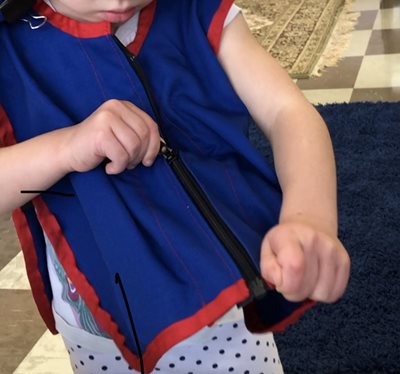Occupational Therapy and Speech-Language Therapy Faculty Members Join For A Research Project
Engaging in pulling a zipper is a functional skill needed by young children. A research paper titled “Efficacy of an Intervention to Teach Zippering,” by a group of interdisciplinary faculty members from Salus University that included, Fern Silverman, EdD, OTR/L, assistant director of the Occupational Therapy Doctoral program; Carrie Knight, PhD, CCC-SLP, assistant professor in the Speech-Language Pathology (SLP) department; and Anna Grasso, MS, OTR/L, CAPS, assistant professor and OT academic fieldwork coordinator, has been published that adds evidence to support the use of a modified zippering vest with added visual and language clues to teach zippering skills to preschool children.
The objective of the study was to compare the efficacy of a standard zippering teaching vest presented with general visual prompts to a modified zippering teaching vest presented with a related story and vocabulary among typically developing preschoolers.
 It was published in the March/April 2021 issue of the American Journal of Occupational Therapy,
It was published in the March/April 2021 issue of the American Journal of Occupational Therapy,
Fifty children ranging in ages from six months to four years, were recruited for the study. Each child received three zippering practice sessions from Salus Occupational Therapy (OT) and Speech-Language Pathology (SLP) students, which faculty supervised. Either a standard (control group) or modified (comparison group) zippering teaching vest was used.
Individual sessions were video recorded and researchers coded data indicating the degree of success through seven zippering steps, then conducted independent tests to compare measures between the two groups.
What researchers found was that both groups advanced their skills with added practice. However, the comparison group performed statistically better than the control group, beginning with the second set of interventions.
Researchers concluded that beginning with a second exposure to the novel instructional method, preschoolers increased their success by completing more of the seven identified steps of zippering than those receiving traditional input.
The study demonstrates the ability of OT and SLP partnerships to create innovative treatments facilitating occupationally based skill acquisition.
The results of this study have the following implications for OT practice: